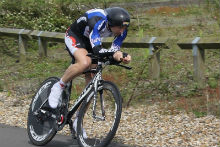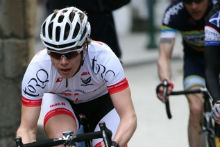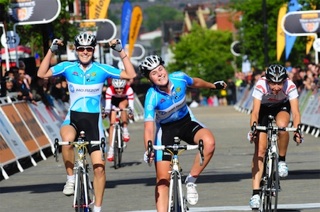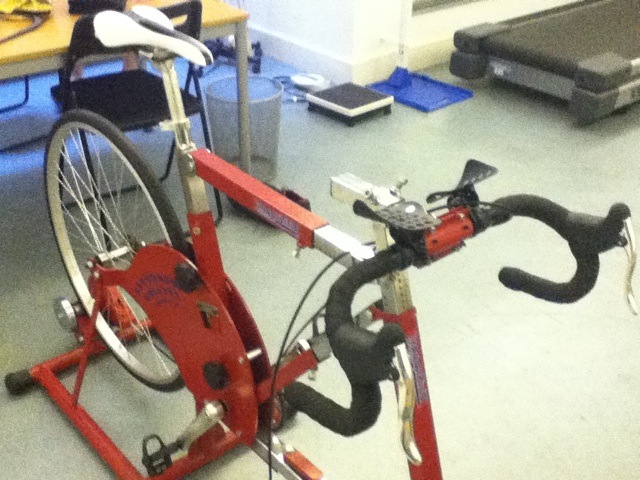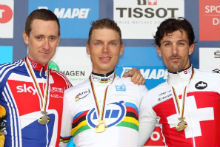The recent hot spell, and the seasonal promise of more to come (it is summer, after all) has focussed our attention on hydration.
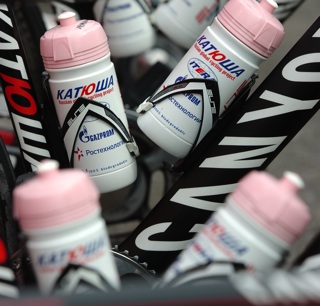 How much fluid is required on a ride? What should we be drinking? And do our physiological characteristics – our age, weight, height, gender, and build – have an impact on the level of hydration required?
How much fluid is required on a ride? What should we be drinking? And do our physiological characteristics – our age, weight, height, gender, and build – have an impact on the level of hydration required?
We caught up with the Chris Hole, a tutor at the Training Room’s coaching academy in Bristol, whose clients have included former British and European triathlon champion, Jane Leslie, to find out more about hydration.
Physiological characteristics
Physiological characteristics do have an effect on the amount of hydration we require, says Chris. Our body type – our height, weight, and a gendered predisposition to muscle or fat – will have an impact on the amount of fluid required.
“If you’re a bigger person, with muscle mass, you’ll need more water to keep the muscles hydrated,” says Chris. “Adipose tissue – that’s fat – doesn’t require much in the way of water to keep it hydrated.”
A concomitant effect of the greater requirement for hydration of muscle than adipose tissue is that men will typically need to take on more water than women, he adds.
“Males require more water because they are more genetically predisposed to be of greater muscle mass. Females, due to hormone differences, having estrogen rather than testosterone, are more prone to hold on to body fat, therefore not requiring as much water.”
Age is unlikely to effect a rider’s hydration requirement, he adds. A rider aged 30, who is six feet tall and weighs 80 kilos, is likely to have the same hydration requirements as one of the same body composition and gender who is 60 years old.
What to drink
Plain water is rarely consumed by competitive cyclists. Typically, riders with an eye on performance will seek to replace lost electrolytes as well as fluids. “When you taste sweat, it’s salty, and that’s electrolyte,” says Chris.
He identifies sodium, chloride, and bicarbonate as the most important electrolytes. “If you look at the make up of the blood and extra cellular fluids, which are the fluids that surround all the cells of the body, they are highest in sodium chloride. To be able to maintain a healthy physiology, for the body to work properly, we need to give it fuel that promotes that physiological state,” he says. To that end, Chris adds unrefined salt to plain water.
Isotonic drinks provide the most effective hydration during a ride, he adds. Such drinks contain a salt and sugar composition similar to that of the blood. “When that drink goes in, it’s very easy for the body to assimilate. If you take in too much sugar, the body will take in what it needs, and get rid of the rest, which is where your insulin responses come in,” he says.
Some riders, hoping to avoid the blandness of water, drink a fruit flavoured concentrate diluted with water. Those who do should be mindful of sugar intake to avoid provoking an insulin response, says Chris. An effective litre of home made isotonic drink might include 750 ml of water, 250ml of orange juice, and a quarter to a half a table spoon of unrefined salt, he adds.
How much is enough?
The volume of fluid required is another key consideration. The thirst reflex is considered a poor guideline to regulate fluid intake. Chris recommends consuming a litre an hour as a guideline (or any variation of that – 250ml every 15 minutes, 500ml every half-an-hour, for example) as a general principle. Environmental factors such as ambient temperature and terrain may require greater intake. Body composition, as discussed above, may also have an effect.
Consuming even a litre an hour will present a logistical challenge to most riders who plan on cycling for longer. Most modern road bikes are equipped with bosses for two bottle cages, and a larger water bottle typically holds 750ml, leaving the rider carrying a litre and a half – enough for a ride of just 90 minutes by Chris’ recommendation. Without the services of a support car, how is it possible to carry enough fluid?
Planning is the answer, says Chris. Training rides can include scheduled stops at pubs or newsagents to take on a top up. Events will include feed zones, and hydration strategies can be planned around those.

